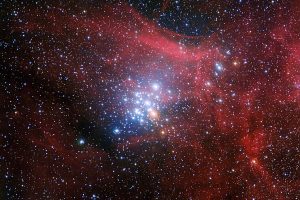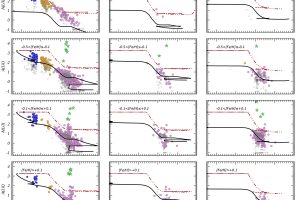Chemistry and rotation of the B stars in the stellar cluster NGC3293. The study: “The Gaia-ESO survey: A spectroscopic study of the young open cluster NGC 3293” of T. Morel (Université de Liège) appeared on A&A

Spectroscopic observations of massive stars (i.e., those more massive than 8 solar masses) allow astronomers to study their rapid evolution, which occurs on much shorter timescales compared to solar mass stars, and the impact of parameters such as stellar rotation on their evolution. To achieve this, observations of stellar clusters are greatly valuable, as they are groups of stars formed
» Read more
